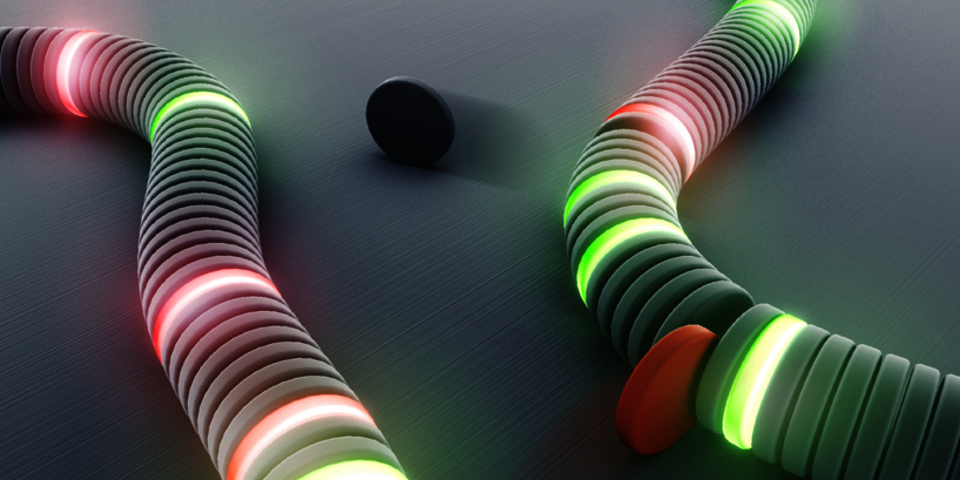Innovative imaging technique clarifies molecular self-assembly
A unique collaboration between chemists and mathematicians at TU/e has led to a new imaging technique that enables the study of molecular self-assembly with an unprecedented level of detail. The researchers, led by TU/e professors Bert Meijer (Institute for Complex Molecular Systems) and Remco van der Hofstad (Department of Mathematics and Computer Science), publish their breakthrough today in the leading journal Science.
The new technique opens a world of unique opportunities for the study of complex self-assembling materials with many potential applications in electronics, medicine and energy. In molecular self-assembly, new material are made from the ground up, with properties which are not found in nature. The research group led by prof.dr. Bert Meijer at the ICMS focuses on materials called supramolecular polymers – long strings built up of single molecules. These materials have a variety of possible applications, for example as biomaterials in regenerative medicine, as nanotubes with good conductive properties in electronics, or as photovoltaic materials in future solar cells.
Good imaging techniques are essential to understand the dynamic processes taking place at the tiny micro- and nano-scale of molecular self-assembly. The revolutionary and ingenious ‘super‑resolution microscopy’ technique introduced in recent years allows optical imaging of objects with dimensions smaller than would normally be possible using an optical technique. In the journal Science, Meijer and mathematician prof.dr. Remco van der Hofstad of the Department of Mathematics and Computer Science today present a new step forward with this technique, allowing molecular phenomena to be imaged that up to now have been invisible.
The contribution of Van der Hofstad was necessary because the molecular machines studied by Meijer’s group are subject to all kinds of random factors, leading to a lot of ‘noise’ in the data. The stochastic models developed by Van der Hofstad allow much clearer image to be made. “It was as if the ‘fog’ covering our images was suddenly lifted”, says the lead author of the publication Lorenzo Albertazzi. According to the Italian researcher it is unique for chemists and mathematicians to work together in this way. “We should do it much more often, as these areas of expertise are very complementary.”
In Albertazzi’s view the new technique is a big step forward in understanding assembly reactions. In their publication the authors demonstrate their approach with a well known reaction in which two strings with red and green components are mixed. “It was always thought that component exchange only takes place at the ends of the strings. But we have now shown that components are exchanged over the entire length of the string.” Albertazzi believes that this is only one example of the tremendous range of new materials and reactions that can now be understood more clearly with this technique.
Source: TU/e Press Team


Discussion